When businesses use Facebook Ads, most tend to promote their products or services. As competition becomes fiercer and consumers want to know more about a business before completing a transaction, content marketing is playing a bigger role in turning new prospects into warm leads and then customers.
Never promoted content using Facebook Ads before? Here’s how to do it correctly.
Who to target with content marketing
The great thing with content marketing is that you can target everyone in your sales funnel, and those who aren’t even in it yet. For example, if you just sold a customer a year’s membership to your SaaS tool, then content such as how-to articles to make use of certain tools and applications can aid their customer experience.
Personally, I like to use content marketing to target cold prospects.
As you know, serving new prospects with product ads is a tough sell, but useful content tailored to their needs builds trust and authority with your business.
Promote a blog post to a new audience and combine it with the time spent on the website’s custom audience to retarget users who spent the most amount of time reading, and retarget them with a lead magnet or product.
Choosing your objectives
To promote content ads, I typically suggest the following objectives:
Send people to your website – As the goal of your ad is to drive traffic to your website to consume your content, targeting people who are likely to click is a suitable objective if you plan to retarget this audience later.
Increase conversions on your website – If the goal of your content is to generate opt-ins to send an email sequence or retargeting ads later, then use a conversion objective to maximize your lead gen. I advise only using this objective if your ads are generating at least 15 conversions per day; otherwise, Facebook will not be able to fully optimize for it.
Boost your post – This is typically the cheapest method of advertising and creates the highest level of engagement on (and off) Facebook. I’ll typically use this objective if I want Facebook to interact with content. The added benefit of this objective is you’ll also piggyback on organic reach, as more people will like, comment, and share your post and it will be seen by their friends for free.
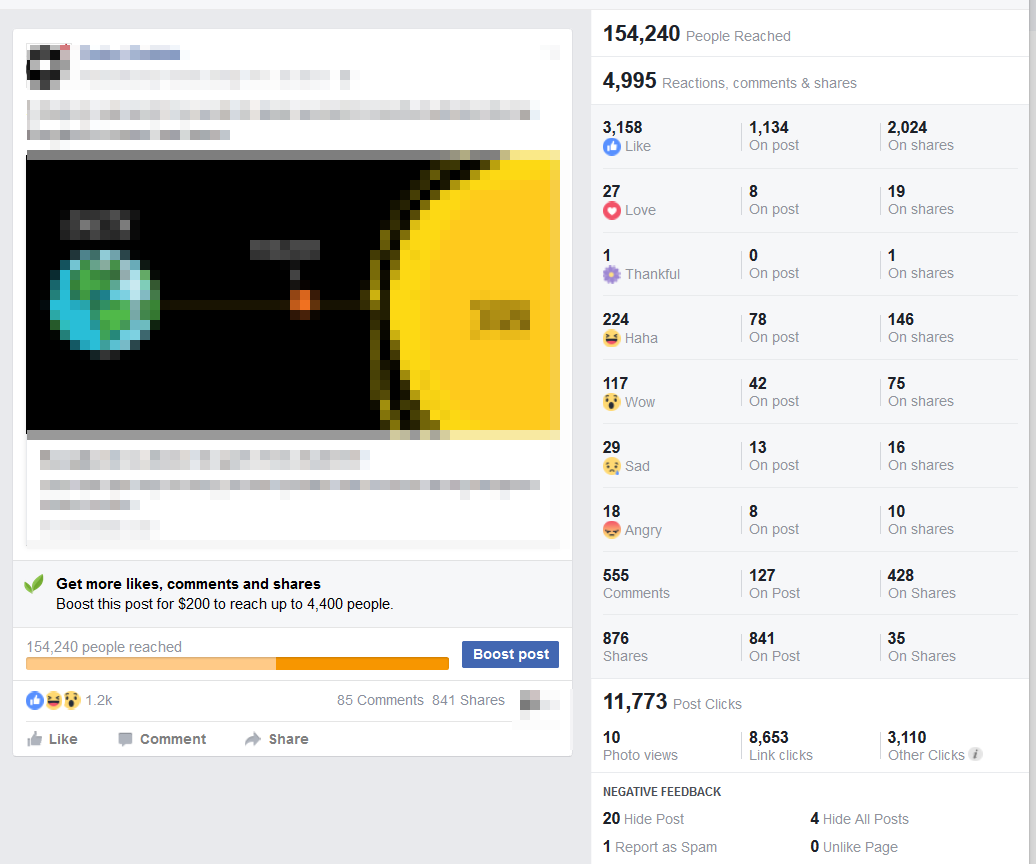
Ad copy and creatives
Unlike a product ad where you may focus on the price or time-sensitive offers to entice engagement from the prospect, content ads differ. The reason we create content is to provide prospects with free value. This value most often is actionable knowledge that consumers can use to fulfill a need.
For example, here’s a great Marketer Startup ad telling readers right off the bat what they will learn before clicking the article (notice the bold lettering).
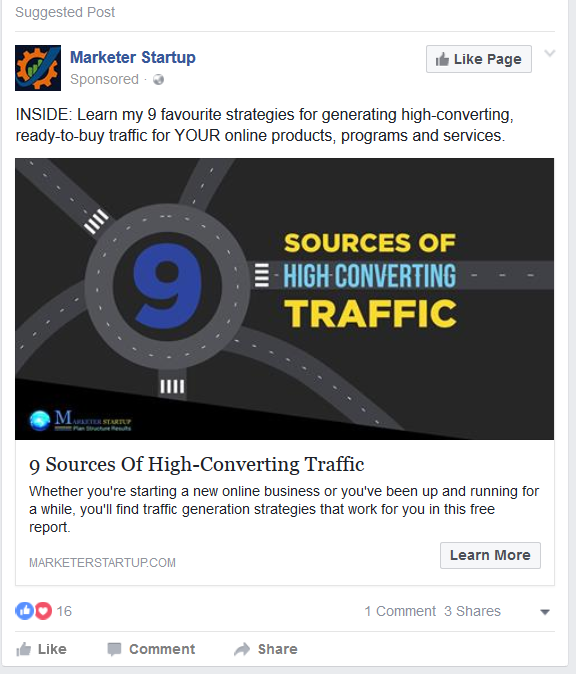
Instant gratification.
Consumers are bombarded by ads on their smartphones every second and won’t read a 1,500-word article unless you clearly explain to them the learning outcome before getting started.
Okay, I lied – they will click on your ads even if you don’t provide them with instant gratification. This is usually done via click-bait, and with Facebook putting a stop to it on the organic side, it’s best to avoid it with any paid ads you are running, too.
An example of a click-bait post is shown below.
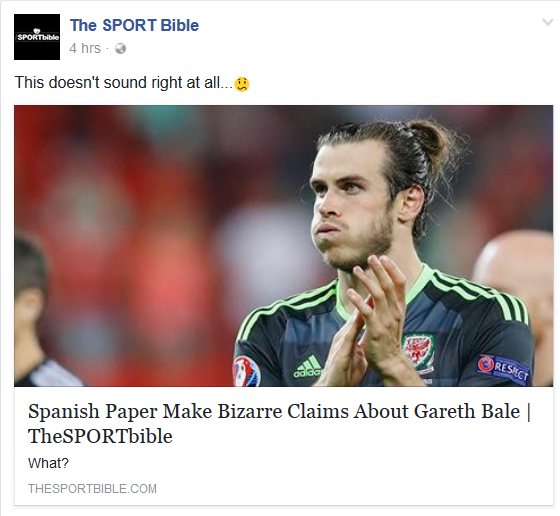
Users will typically click this type of ad because their curiosity is raised, and then leave within 5 seconds, burning your marketing $$$.
Finally, with Facebook changing their policy on the 20% text rule, I’ve noticed more and more businesses use text in their images when promoting content.
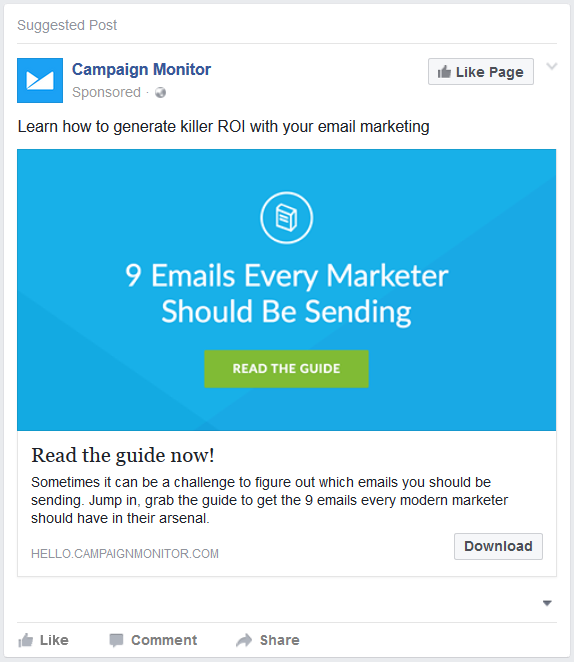
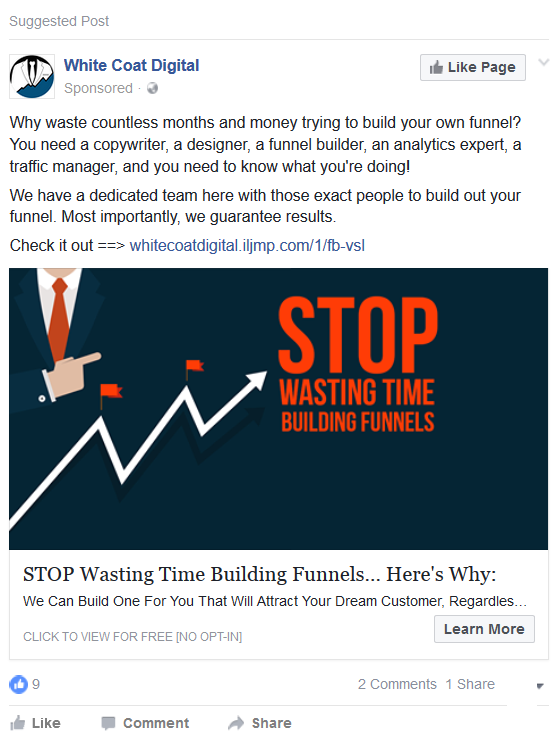
As I’ve never visited either website before, they both need to do a lot more to get my attention, and I believe this is why brands are using text and image-based creatives for content to get their message across with greater impact.
Placements
My favorite place to serve content ads is on the Facebook audience network. While not the best placement option to sell products, it provides better and cheaper click-through rates and costs per click than all other placements.
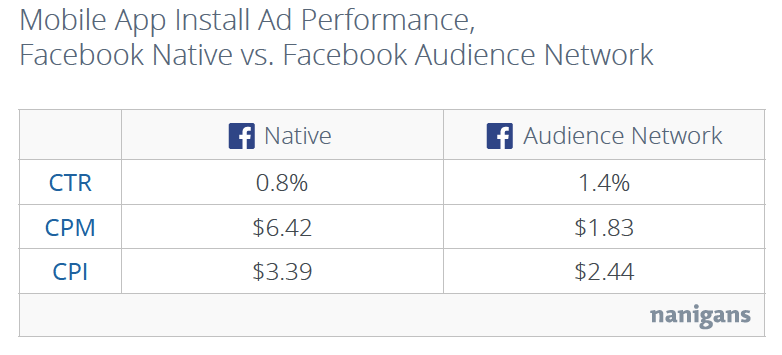
(Source)
The right-side column is another underleveraged placement very few brands take advantage of. Due to its small image size, I advise against using text in your image or branding the ad with your logo as it will be too small for anyone to read. For these ad types, it will be your image and the headline that will get clicks.
The layout of your content should dictate whether you serve it to desktop or mobile users. Mobile users have shorter attention spans as at any given moment they may receive a pop-up message from WhatsApp, a social media profile, email alert, or SMS or call.
The average human attention span is now around 9 seconds. I suspect this to be even lower when people are surfing the web on their smart devices.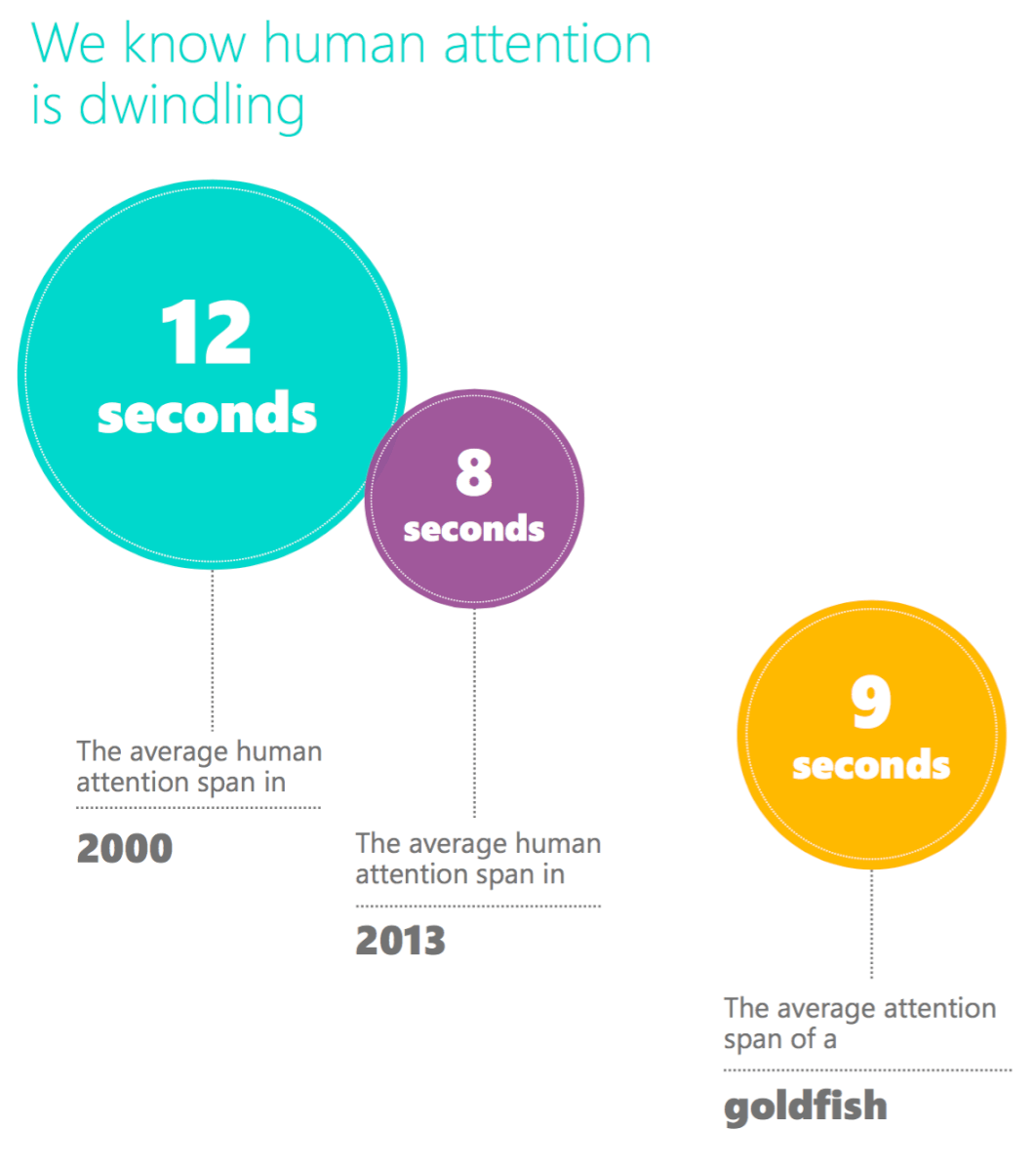
(Source PDF link)
Because their attention spans are shorter than those of desktop users, your content needs continual points of interest (images, videos, bullet points, etc.) to stop them from leaving.
Shorter paragraphs are ideal to keep their attention. It’s sometimes worth creating the same blog post twice – one that is optimized for desktop users and another for mobile users.
Summary
Are you struggling to find new customers or nurture your leads effectively through Facebook? If so, then content marketing might just be what you need.
Creating compelling ads to get consumers to read your content is only half the battle – your content has to be rock solid and correctly formatted for the correct audience. The older demographic may prefer more words and less images, whereas millennials want videos and flashy images.